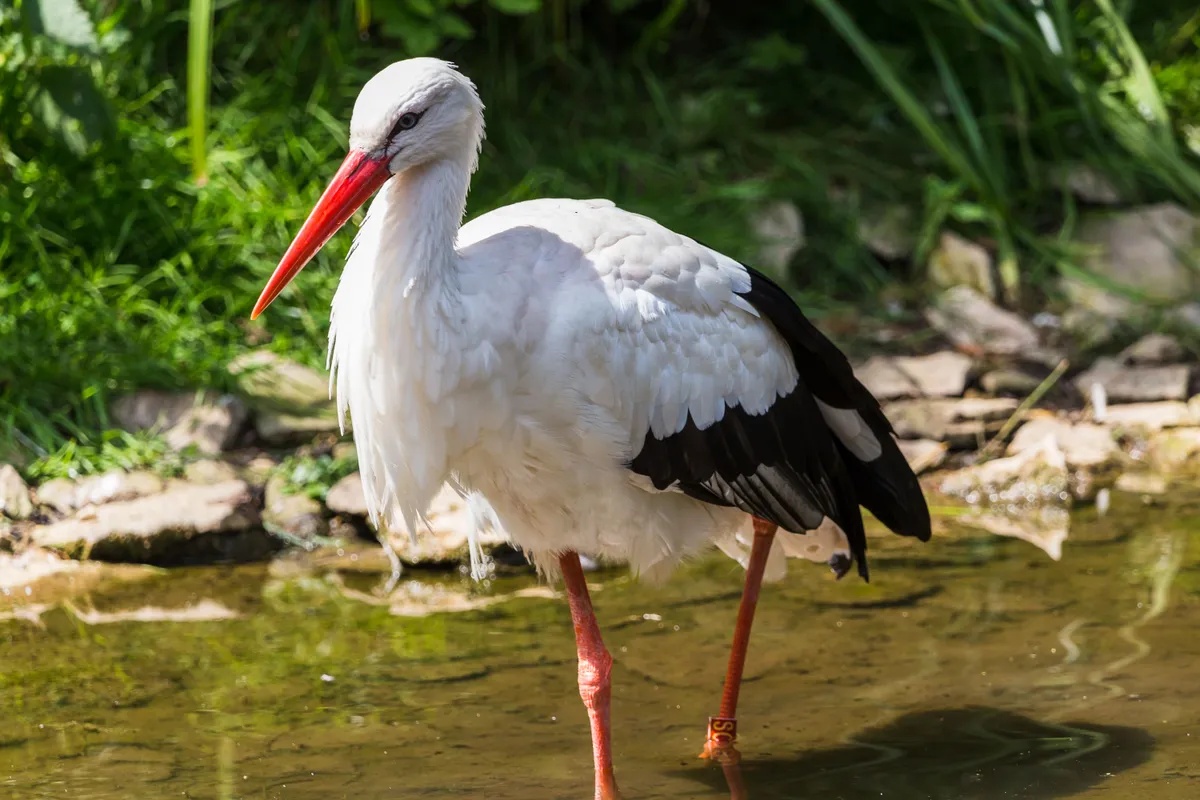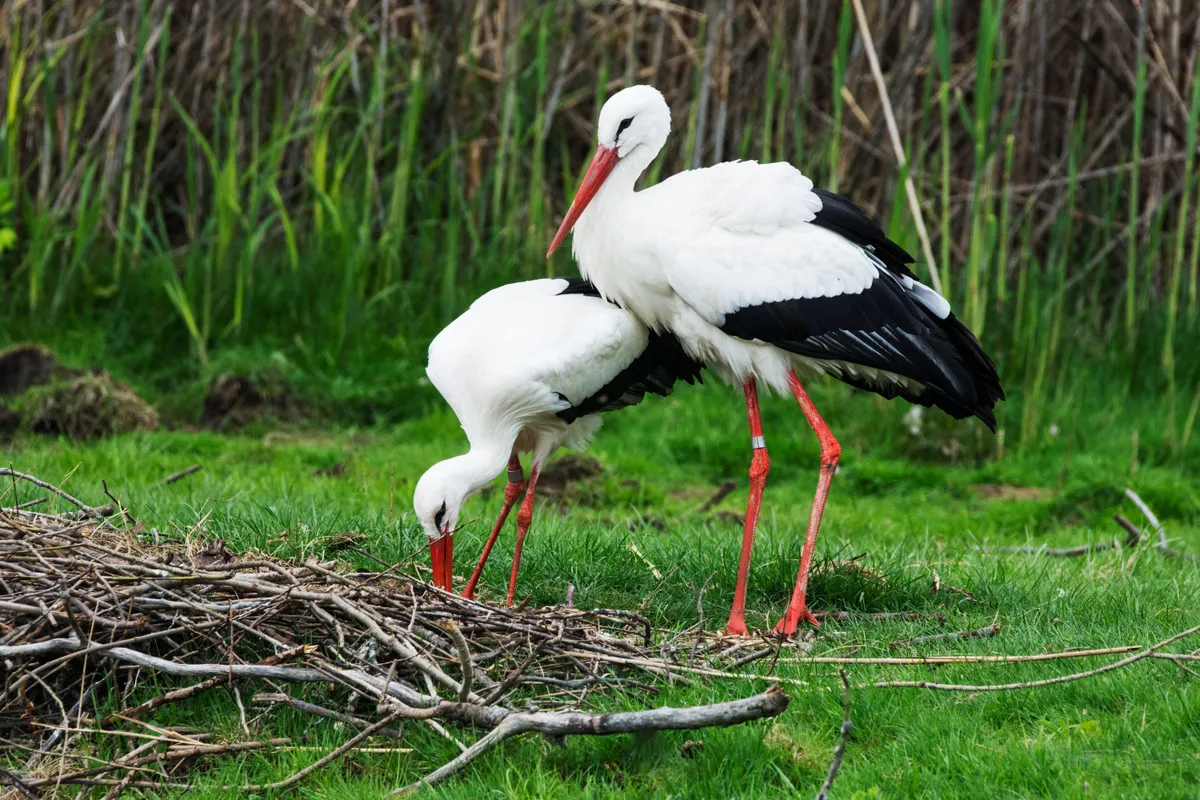A group of 24 young white storks have been released in West Sussex, as part of an initiative to restore populations of the species in Southern England.
The juvenile storks were hatched and raised at Cotswold Wildlife Park earlier this summer, before being released at the Knepp rewilding project last week.
Part of a migratory species that will eventually move south for the winter, the young storks were initially kept in captivity while they became accustomed to their new surroundings.
Now, in their new home, the storks can be identified by the unique coloured rings that have been tagged on their legs.
Anyone who spots one of these storks in the British countryside is being asked to report their sightings, as the information will help scientists to understand the movements of the birds. This information will help scientists to understand the movements of the birds.

Jamie Craig, Curator of Cotswold Wildlife Park said: “It does not seem long ago that we witnessed the first of these birds hatching out at the Park.
“After months of hard work it was a fantastic moment to watch these birds leave the confines of the netted release pen and take flight - seeing these birds riding the thermals over Knepp is a sight we will not forget and we eagerly await what the future may hold for them.”

Lucy Groves, Project Officer for Durrell Wildlife Conservation Trust – a partner in the project – said: “Having looked after these birds since they arrived at Knepp, it was a joy to see them leaving the release pen and taking to the skies with our free flying adults.
“I have been blown away by the response from our local community, many of whom have provided us with sighting reports which are crucial for helping us to understand the behaviour of these young storks.
“It will be interesting to see whether they decide to stay with our resident adults at Knepp or if they spread their wings and decide to fly south. This is an exciting milestone for the project and I will be following their progress closely.”
The storks are expected to cross over the English Channel, before joining with other migrating storks. They will then head south through France and Spain before crossing the Strait of Gibraltar, and then head to the Sahara and West Africa.
Eight of the storks have been tagged with GPS systems that transmit data on a regular basis, so conservationists will track this path, and find out whether they fly south for the winter or remain in the UK.

Why do they ring the storks?
As the project aims to find out information about each stork, they have to be individually identifiable. Every stork has a metal ring with a unique number on it, and a blue plastic ring, so that members of the public can identify the birds in the wild without having to catch them.
Do the tags affect the birds?
The tags are worn by the storks like a backpack and weigh less than 3% of the stork’s bodyweight, so they won’t get in their way.
The ‘backpack’ harness is also made with biodegradable stitching, so that after 2 to 3 years, it will fall off.
Studies carried out in similar projects in Portugal have shown the tracking devices have no negative impact on the storks, but if any members of the public identify an issue during a sighting, they can report it on the website.
For more information about the project visit www.whitestorkproject.org or follow the Twitter account: @ProjectStork
